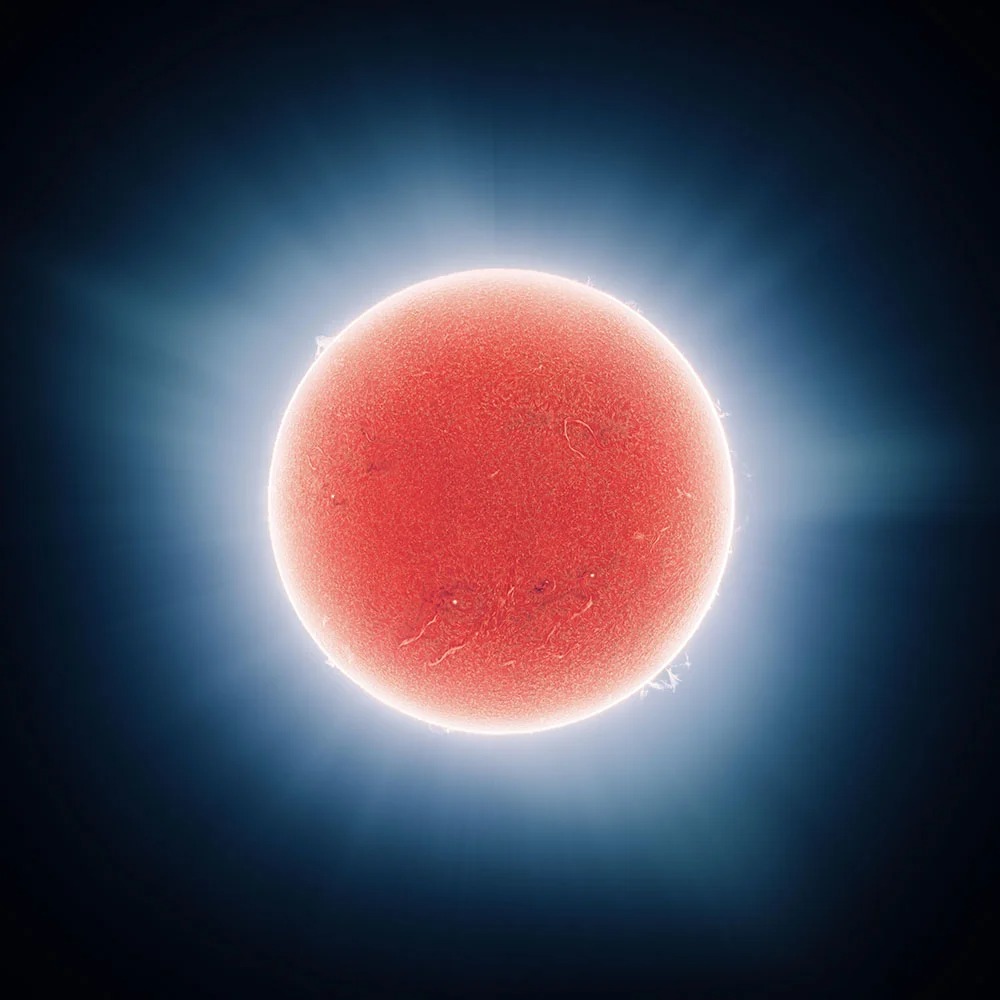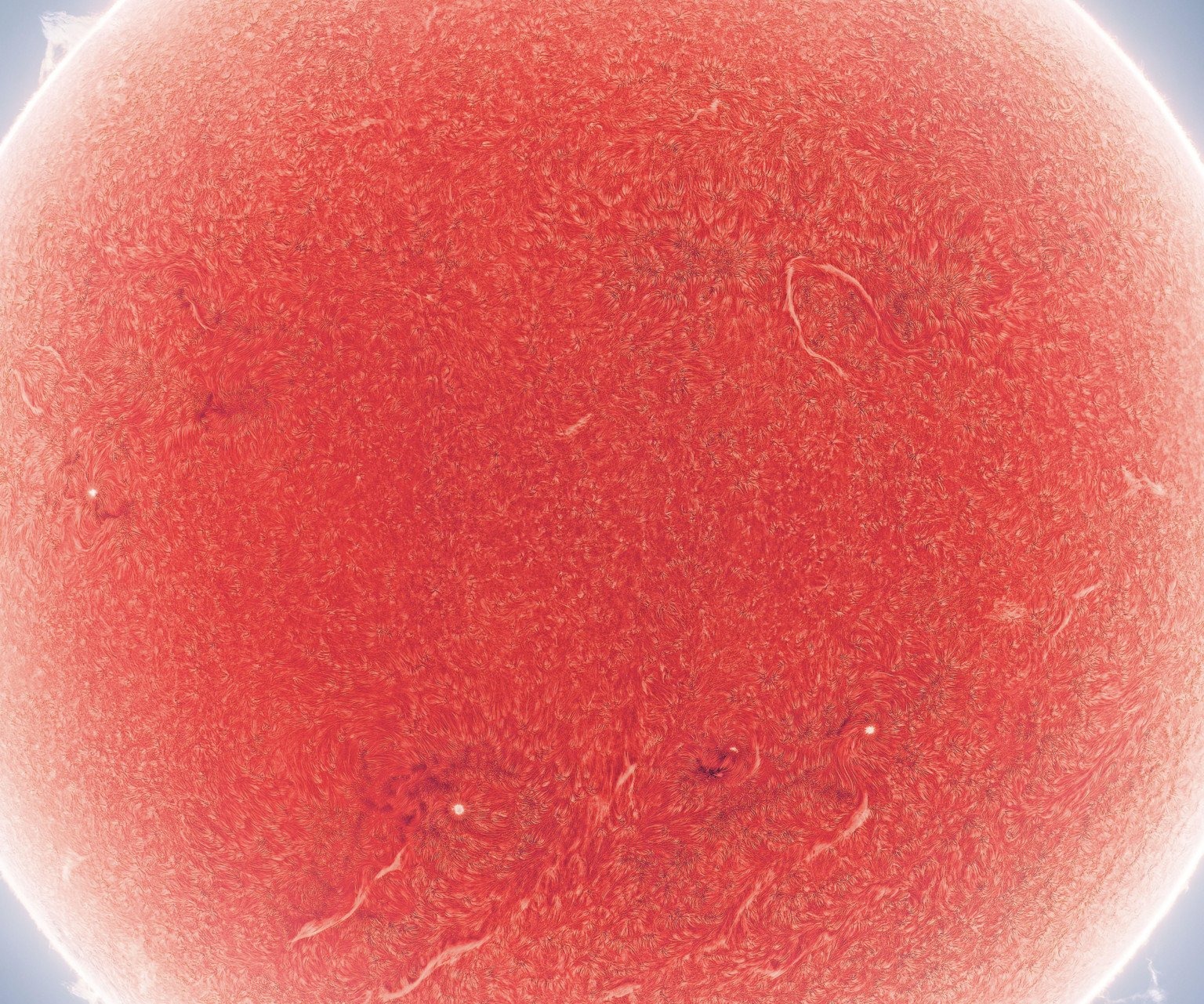Talented astrophotographer Andrew McCarthy has published an amazing 145-megapixel image of the Sun taken with a specially modified telescope. The incredible details of our nearest star are a complex image that is reducible to simultaneously capturing two atmospheres of the Sun.

The first is the corona, the most distant part of the Sun’s atmosphere, which McCarthy shot back in 2017 with a Canon Digital Rebel and a 300mm Tamron telephoto lens. The first snapshot was taken with automatic settings. “I believe the exposure was about one second,” explains the astrophotographer.
To create the next photo, the photographer’s approach was completely different. The second element of the photo – the chromosphere – was taken in early August 2022. But this required a much more advanced kit than just a Canon Rebel. The enthusiast used several additional filters, including a hydrogen alpha filter called the “day quark”, which allows seeing a narrow bandwidth of light that makes visible the atmospheric details of the chromosphere.

The corona and chromosphere are almost impossible to photograph together due to the extreme difference in brightness, so McCarthy put the image together so that the two solar atmospheres could be placed in one impressive image.
Lucky Imaging Method
McCarthy says he’s constantly tinkering with his telescope, using non-standard and modified parts to get very detailed images. He also shared his way of getting such a strikingly detailed photo. It uses the Lucky Imaging method.
There’s the corona shot by itself. Now that I know more about photography, I’m looking forward to the next eclipse when I can get a much more detailed shot. pic.twitter.com/YZ8ObdeIIU
— Andrew McCarthy (@AJamesMcCarthy) August 16, 2022
“Lucky Imaging is about taking thousands of photos of something in a few minutes. Then you need to compose the resulting images using software that will make your image much clearer,” explains McCarthy.
This is not the first time that McCarthy’s celestial images have conquered the Internet. He and Connor Matern created a fascinating 174-megapixel image of the Moon, which they spent two years on.
Recall that earlier a strikingly rare atmospheric phenomenon stunned eyewitnesses.
Follow us on Twitter to get the most interesting space news in time
https://twitter.com/ust_magazine
